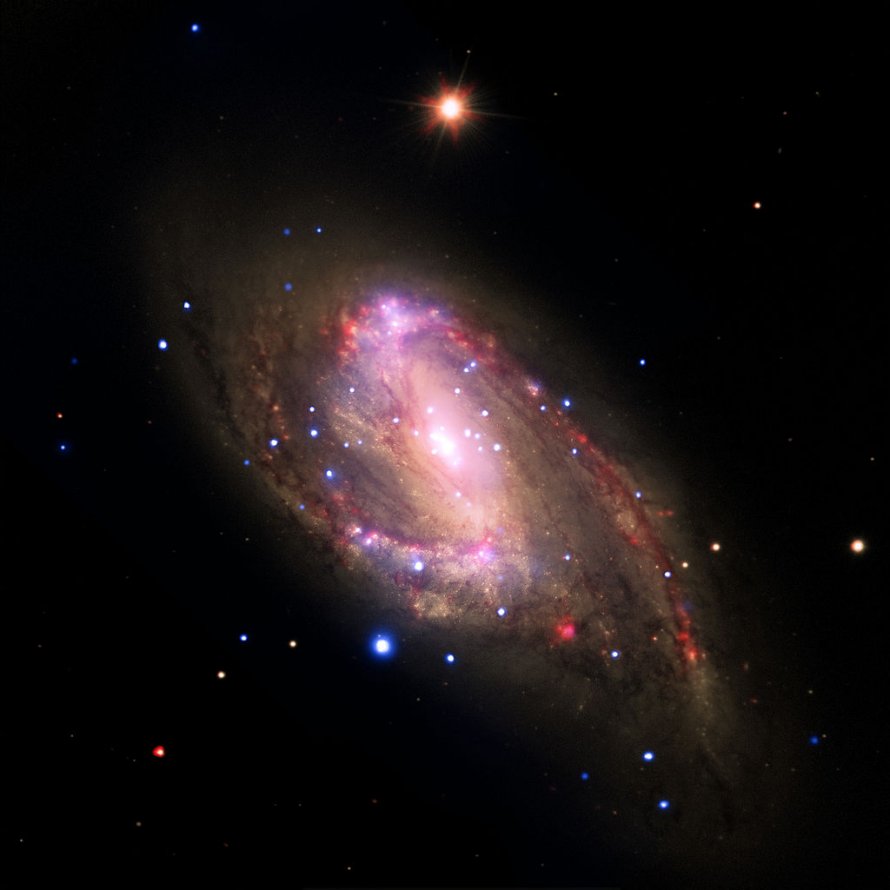M66 (NGC 3627) - Leo Triplet
Messier 66 (NGC 3627), also known as the Leo Triplet, is a barred spiral galaxy located in the constellation Leo in the M66 Group of galaxies. M66 is 35000000 light years away from Earth.
M66 is best viewed during early spring, is magnitude 8.9, and can be viewed with binoculars. M66 is 9.1' x 4.2' in apparent size. For reference, the full moon is 30'.
Observing difficulty: Easy
- Name:
- Leo Triplet
- Type:
- barred spiral galaxy
- Constellation:
- Leo
- NGC or IC:
- NGC 3627
- Magnitude:
- 8.9
- Viewing:
- binoculars
- Size:
- 9.1' x 4.2'
- Distance (light years):
- 35000000 LY
- RA:
- 11h 20.2m
- Dec:
- 13 0'
- Season:
- early spring
- Galaxy group:
- M66 Group
- Messier Marathon #:
- 33
* The naked eye can see up to magnitude ~7-8 objects under ideal dark sky conditions.
The Brightest Member of the Leo Triplet
Messier 66, also catalogued as NGC 3627, is a spiral galaxy that forms a part of the Leo Triplet, alongside Messier 65 and NGC 3628. Situated in the constellation Leo, this galaxy was first discovered by Charles Messier in 1780. It is located approximately 36 million light-years away from Earth.
Characteristics
Classified as an intermediate spiral galaxy of type Sb, Messier 66 boasts well-defined spiral arms that have been distorted due to gravitational interactions with its nearby galaxies in the Leo Triplet. These interactions have triggered a high rate of star formation, making M66 rich in young blue stars and pinkish star-forming regions where interstellar gas and dust have compressed under gravity.
Magnitude and Size
Messier 66 has an apparent magnitude of 8.9, rendering it invisible to the naked eye but relatively easy to spot using binoculars or small telescopes under dark skies. The galaxy extends around 9.1 by 4.2 arcminutes in the sky. This corresponds to a spatial diameter of approximately 95,000 light-years, making M66 significantly larger than our Milky Way galaxy.
Finding and Viewing Messier 66
Locating Messier 66 requires first finding the constellation Leo, which is most visible in the night sky during spring months. To identify M66, start from the star Denebola ? Leo's tail ? and move northeast to the area between the stars Theta Leonis and Iota Leonis, where you'll find the Leo Triplet.
As the brightest of the three galaxies in the Triplet, M66 is the easiest to observe. A small to medium-sized telescope will reveal a patch of light with a brighter core, while larger telescopes may begin to show some details of the spiral structure, including the dust lanes and the high-density regions of star formation.
Messier 66 is a remarkable celestial object, offering a wealth of observational opportunities for astronomers. Its bright core, extensive structure, and intriguing interactions with neighboring galaxies make it an exciting subject for both viewing and imaging.



